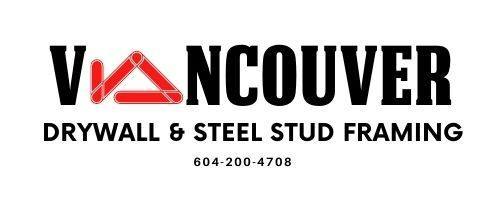Vancouver Steel Stud Framing
Metal Studs and Drywall: Best Practices for Residential Renovations
Metal studs and drywall are quickly becoming a top choice for residential renovations, surpassing traditional wood studs in popularity. Their durability, consistency, and versatility set them apart.
In this blog, we'll dive into the advantages of metal studs, explain the different types available, and guide you through their installation process, from preparation to attaching drywall and the final touches.
Metal Studs Over Wood
While wood studs have long been popular, metal studs offer compelling benefits. Below is a brief comparison:
| Criteria | Metal Studs | Wood Studs |
|---|---|---|
| Durability | Resistant to rot, termites, and moisture. | Vulnerable to rot and termites. |
| Consistency | Uniform size with no warping. | Can warp over time. |
| Fire Resistance | Higher melting point than wood. | More flammable than metal. |
| Eco-friendliness | Often recycled and recyclable. | Renewable but takes longer to replace. |
Types and Sizes of Metal Studs
Metal studs have become popular in residential renovations due to their durability and consistency. The diverse types and sizes available provide a flexible option for various construction scenarios.
| Type | Description | Benefits | Common Uses |
|---|---|---|---|
| C-Studs | Characterized by their distinctive C-shaped flanges. | Versatility in application, suitable for both load-bearing and non-load-bearing walls. Streamlined installation process due to their shape. | Walls and Partitions |
| I-Studs | Known as "joist" or "hatted" studs, resembling the letter "I". | Provides additional structural support where needed. High durability against lateral forces. | Areas requiring added structural integrity. |
| Track Studs | U-shaped channels used at the top and bottom of walls. | Secure foundation, aiding in the alignment and stabilization of wall structures. Simplified placement and attachment due to their design. | Aligning and securing C-studs or I-studs at ends. |
Sizes
As noted by Stefan Gheorghe, the CEO of HomeEdit, that the listed sizes pertain to the stud's width. The metal's thickness can differ, typically being either 25 gauge or 20 gauge. These are the standard metal stud dimensions:
2 1/2 inches- 3 5/8 inches
- 4 inches
- 6 inches
- 8 inches
- 10 inches
- 12 inches
- 14 inches
Factors Influencing Size Choice:
- Purpose of Wall
- Insulation Needs
- Aesthetic Preferences
Tools and Materials Required
Having the proper equipment and materials on hand is essential when working on a job that involves metal studs and drywall. This is a breakdown of what you'll need:
| Tools | Description |
|---|---|
| Tin Snips | For cutting metal studs to the desired length. |
| Metal Stud Crimpers | To securely connect metal studs. |
| Screw Gun | A tool specialized for driving screws swiftly. |
| Level | Ensures the studs are perfectly upright. |
| Chalk Line | Marks straight lines to align studs accurately. |
| Laser Level | Offers precision in leveling and alignment of the studs. |
| Materials | Purpose |
|---|---|
| Screws | Used to join metal studs and to attach drywall. |
| Anchors | Provide additional support and stabilization for the studs. |
| Brackets | Reinforce joints and corners in the structure. |
Preparing the Work Area
Proper preparation minimizes errors and ensures a seamless installation process. The following deals on how to go about it:
Measuring and Marking:
- Start by measuring the height and length of the area where the studs will be placed.
- Use a tape measure to get accurate dimensions.
- Mark these measurements using a pencil or chalk for clarity.
Creating a Layout:
| Step | Description |
|---|---|
| Marking the Floor | Use chalk or a pencil to outline where each stud will be positioned. This ensures equal spacing between studs. |
| Marking the Ceiling | Draw parallel marks to the floor marks. This guarantees that the studs will be vertically straight. |
Ensuring a Clean Workspace:
It's essential to have a workspace free of obstructions. This not only speeds up the process but also ensures safety.
- Clear the area of any debris, tools, or materials not in use.
- Ensure there's adequate lighting so you can see your marks and measurements clearly.
- If working in an inhabited space, remove furniture or other items to provide ample room for movement.
How to Install Metal Studs
1. Securing Track Channels:
- Fasten U-shaped track channels at the top and bottom using screws.
- Align with markings for precise placement.
2. Cutting Metal Studs:
- Measure the distance between the tracks.
- Cut studs to the needed length using tin snips.
3. Installing the Studs:
- Insert studs vertically between the tracks.
- Check for a 90-degree angle to the track and vertical alignment using a level.
4. Securing the Studs:
- Fasten using screws or crimp with metal stud crimpers.
5. Framing Door and Window Openings:
- Mark and measure openings.
- Install framing studs, ensuring a square and level fit.
How to Attach Drywall to Metal Studs
1. Measure and Cut Drywall:
- Start by determining the precise dimensions of the wall area.
- Lay out the drywall sheets on a flat surface.
- Mark the measurements using a straightedge.
- Use a utility knife to score and snap the sheets to the desired size.
2. Align Drywall Sheets:
- Carefully lift the cut drywall sheet.
- Hold it in place against the metal studs, ensuring the edges align perfectly with the centers of the studs for secure fastening.
3. Secure the Drywall:
- With the drywall in position, begin securing it using drywall screws.
- Space screws about 12 inches apart along the studs.
- Drive screws just below the surface without tearing the paper or going too deep.
4. Multi-layer Installation (if needed):
- In cases where added insulation or soundproofing is desired, you would need to install additional layers of drywall.
- For each subsequent layer, repeat the above steps, ensuring the seams of the drywall layers do not align with the previous layer for maximum strength and efficiency.
Final Renovation Steps
1. Sanding
| Objective | Method |
|---|---|
| To create a smooth surface by removing imperfections. | Use fine-grit sandpaper. |
| Focus on joints and edges. | |
| Wipe away dust with a soft cloth. |
2. Priming
| Objective | Method |
|---|---|
| To provide a consistent base for the paint. | Choose a primer suitable for drywall. |
| Apply evenly using a roller or brush. | |
| Allow to dry completely. |
3. Painting
| Objective | Method |
|---|---|
| To give a finished look and protect the surface. | Pick the desired paint colour. |
| Apply using a roller for larger areas and a brush for edges or corners. | |
| Consider multiple coats for vibrant and even coverage, allowing drying time between coats. |

Transitioning to Metal Drywall Studs is a Trend
The demands of modern renovations have increased greatly through the years. Metal studs and drywall today have revolutionized residential renovations with their durability, consistency, and eco-friendly attributes. Not only do they offer a strong foundation, but they also ensure a finish that's built to last.
As you get into each step, start your preparations with Vancouver Drywall & Steel Stud Framing - from the work area to the final paint application. We will help contribute to a satisfying and enduring project that not just appeals but lasts a lifetime.
Frequently Asked Questions
-
What drywall screws for metal studs do you recommend?
Below are some of the recommended features and products for drywall screws suitable for metal studs:
Thread Type
Fine-threaded screws (better grip in metal).
Length
- 1 inch for 1/2 inch drywall.
- 1-1/4 inch for 5/8 inch drywall.
Material
Phosphate-coated or corrosion-resistant.
Point
Sharp point (for easy penetration without pre-drilling).
Special Features
Self-drilling tips.
Bugle head design.

Address
4214 Miller St. Vancouver, BC, V5N 3Z8 Canada
Phone
604-200-4708
vansteelstuds@gmail.com
CONTACT US TODAY!
Contact Us
We will get back to you as soon as possible
Please try again later
